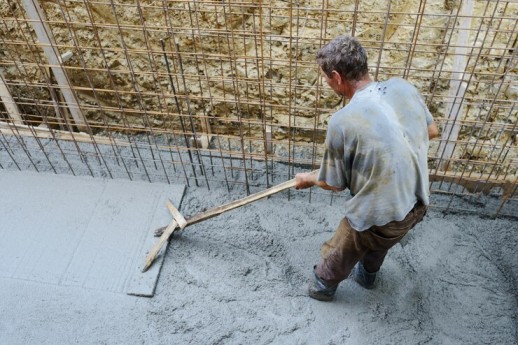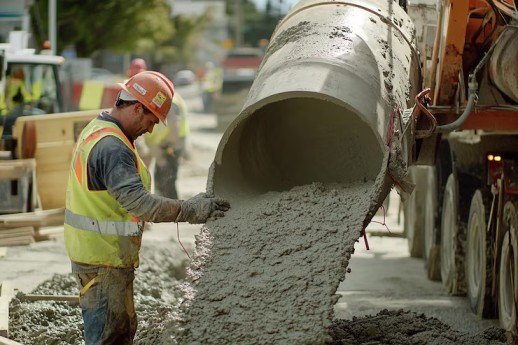What is Reinforced Cement Concrete?
Reinforced Concrete Cement (RCC) is a hybrid part of compressive sturdiness of cement and the tensile strength of steel reinforcement bars (rebars). The synergy of RCC enables it to structurally support tensile and compressive loads and thus forms a key element in modern construction. Plain concrete is good at compression but bad at tensile strength. Alternatively, both in terms of compression and tension steel is the same strong; the best structural design when combined with concrete.
Types of Reinforcement Used in RCC
1. Mild Steel Bars
RCC construction uses mild steel bars as it can bend at the cost of not breaking. These bars are available in different diameters and have to conform to required standards of tensile strength, as specified by suitable codes.
2. Hot Rolled Bars
Engineered reinforcements, hot rolled bars, have practically double the tensile strength of mild steel bars. When heated they can be bent with no defects appearing, making them a robust option for RCC.
3. Cold-Worked Bars
Bars formed with cold worked shapes twisted or ribbed have increased strength. These bars have characteristic strengths of around 425 N/mm² and do not need heating for bending, they are flexible re construction.
4. Steel Fabric
Various types of bars and wires welded into a mesh consist of producing steel fabric. Although it is effective, care should be taken during fabrication to assure the proper quality standards are maintained to insure maximum performance.
Uses of Reinforced Cement Concrete

RCC is a highly versatile material suitable for numerous applications, including:
- Buildings
- Bridges
- Roads
- Water Tanks
- Flyovers
- Floating Structures
- Foundations
- Marine Structures
- Precast Works
- Bunkers and Silos
- Chimneys and Towers
- Pipes and Conduits
- Retaining Walls
The following are the advantage of Reinforced Cement Concrete
1. Strength
The tensile strength, the compressive strength and even the modulus of elasticity of RCC make it one of the best building materials.
2. Durability
The design of RCC structures emphasises the fact that these structures will last for up to 100 years through the products. With such low permeability, it protects against water soluble substances, including carbon dioxide and sulphates, lowering any deterioration.
3. Ductility
The presence of reinforcement bars in RCC structures give ductility, which provide warning signs (cracks for example) before failure occurs on overload.
4. Versatility
Due to its varied forms and shapes, RCC has a great potential for flexibility in architectural and engineering design.
5. Cost-Effectiveness
RCC is a cost effective choice since it has inexpensive and widely available components. It’s tough enough to require less maintenance, leading to lower overall costs.
6. Fire Resistance
RCC structures are fire resistant, surviving heat for about two to six hours and hence safer than steel or wooden buildings.
Disadvantages of Reinforced Cement Concrete
While RCC offers numerous benefits, it also has disadvantages:
- Weight: The RCC structures are heavier than the steel or wood structures.
- Labour Intensive: Formwork and centering needs to be installed during the construction process, which consumes huge labour.
- Time for Strength Gain: Like other conventional construction materials, RCC also requires time to attain maximum strength; hence, usage of constructed structure is delayed till such time.
- Cost of Forms: Casting RCC can be expensive in the formwork required.
- Shrinkage Issues: Shrinkage of RCC causes loss of strength and cracking.
Factors to Consider Before Using RCC
Before deciding on RCC construction for your project, consider the following:
1. Requirement of Strength
Determine the required strength as per structural needs and design specifications taking load bearing capacity and environmental conditions into view.
2. Quality Standards
Make sure the RCC follows all the necessary quality standards. Ensure that the materials and methods are certified as much as possible regarding what is desired.
3. Mix Design
Understand the concrete mix design proportions of water, cement, aggregates, regarding mix proportions and admixtures. Make sure the mix is consistent with your project requirements for strength and workability.
4. Source of Materials
Assess materials quality employed in RCC like aggregates, cement and reinforcements. If you source from reputable suppliers it can improve the overall quality of your concrete.
Conclusion
In this extensive description from Walls and Dreams, we explore Reinforced Cement Concrete (RCC), including its various uses, advantages, and disadvantages. Key factors to consider before choosing RCC are discussed, highlighting its remarkable strength, durability, and versatility, making it a preferred choice for many construction projects. By implementing best practices in RCC construction, professionals can ensure structural integrity for long-term durability and successful building outcomes.








